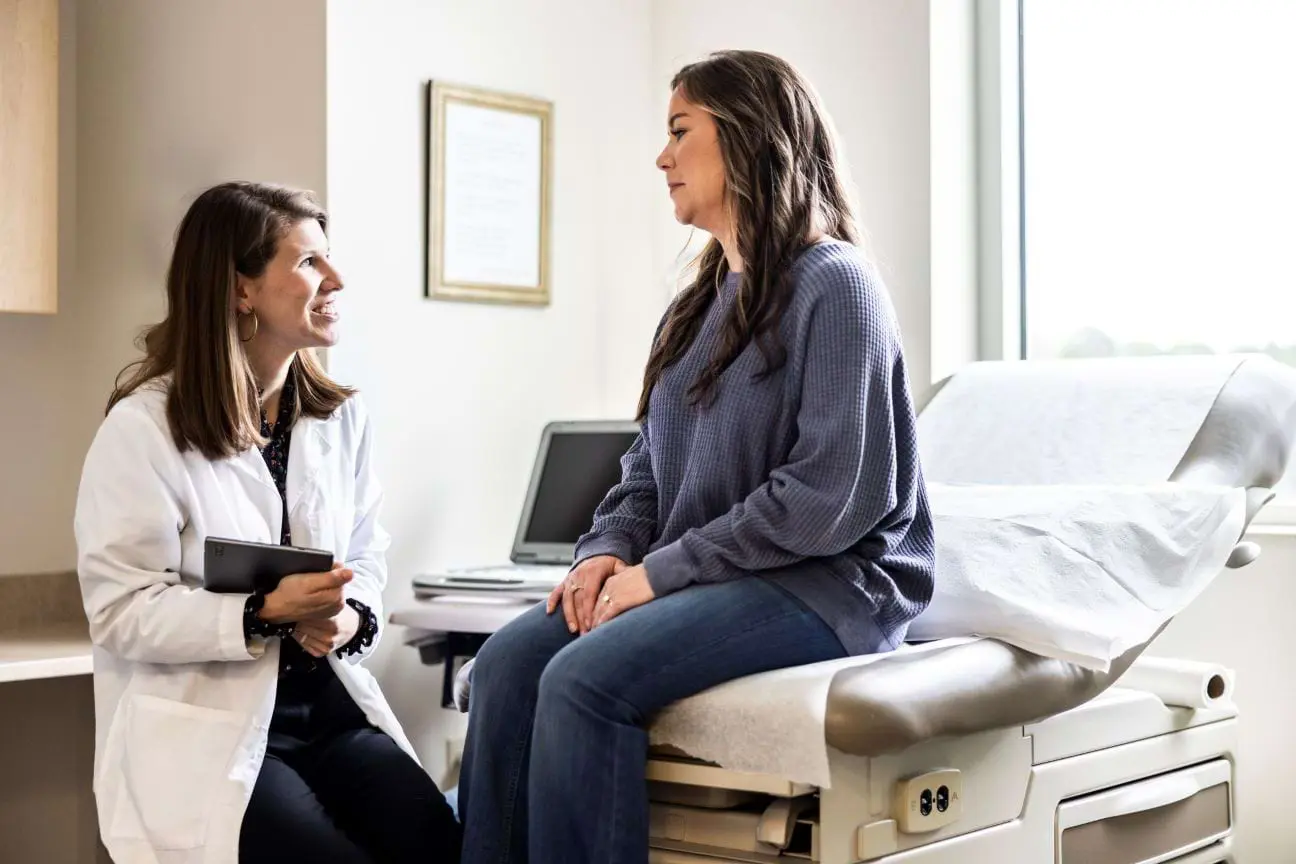Occupational medicine involves ensuring health and safety in the workplace, including preventing, evaluating, and managing work-related illnesses and injuries.
This blog explores occupational medicine, its role in the workplace, treatments and interventions, what is required to become an occupational medicine professional, and how employers can find an occupational medicine specialist near them.
Table of Contents
What is Occupational Medicine?
Occupational medicine focuses on promoting workplace health and safety, as well as evaluating and treating workers who are injured during employment or suffer from work-related injuries or diseases.
Physicians and health specialists in occupational medicine assess the workplace environment for risk factors, establish health and safety programs to prevent work-related illnesses and injuries, and promote overall worker well-being. In addition, they are qualified to diagnose, treat, and determine a worker’s ability to perform work-related tasks safely. Occupational health specialists also perform non-clinical administrative tasks and ensure that impacted workers receive much-needed support, resources, and advocacy.
Employers can use occupational medicine services to increase productivity, decrease healthcare costs, maintain compliance, and reduce lost time.
Key Responsibilities of Occupational Medicine Specialists
Occupational medicine specialists are skilled in conducting employee health assessments (including pre-employment testing and screening), developing workplace health programs, and managing workers’ compensation cases.
They are also well-versed in current state and federal workplace health and safety regulations, including those set by the Occupational Safety and Health Administration (OSHA) and the Department of Transportation (DOT), as well as state employee rights laws and State Workers’ Compensation Board regulations.
Occupational medicine professionals’ skill, knowledge, and experience allow employers to educate employees on injury prevention, treat and mitigate the impact of workplace illness and injury, advocate for workers’ rights, and return employees to work quickly and safely.
Common Conditions and Treatments in Occupational Medicine

Common work-related health conditions that fall under the discipline of occupational medicine include:
- Musculoskeletal injuries caused by repetitive motion, trauma, and overuse.
- Injuries caused by falls or lacerations, which are common in industries such as construction, manufacturing, transportation, hospitality, and food service.
- Injuries and illnesses including sickness due to exposure to toxic substances, infectious diseases, and carcinogens.
- Occupational asthma.
- Hearing loss.
- Stress, which leads to anxiety, depression, and PTSD. In the United States, 65% of workers consider the workplace a major source of stress.
- And more.
Typical treatments and interventions used by occupational medicine specialists include:
- Pre-employment medical exams to ensure workers are fit and able to perform workplace tasks.
- Assessing workplace conditions and hazards, including the extent of possible exposure to health hazards.
- Identifying risk factors for stress, including high-intensity jobs.
- Injury prevention programs (identifying at-risk workers, medical surveillance screenings, etc.)
- Employee education and training.
- Wellness exams.
- Respirator fit testing.
- Ergonomic programs.
- Disability assessment.
- Chronic disease management.
- Mental and physical health rehabilitation.
- Return to work and fit-for-duty exams.
- Helping employers integrate occupational health and safety programs into the workplace.
- Case management, including counseling, medical care, crisis intervention, advocacy, and continuity of care.
- Absence case management.
The Role of Occupational Medicine in Workplace Safety
Occupational medicine evaluates health and safety risks and promotes and maintains employee health and safety. Occupational medicine specialists also provide medical care to workers with work-related injuries or illnesses. In addition, they case manage individuals injured at work or dealing with work-related illnesses or disability.
Occupational medicine is often used interchangeably with physical therapy. However, physical therapy differs in its focus, approach, and treatment types. Physical therapists treat workers who are recovering from workplace-related illnesses or injuries and work to improve peoples’ ability to perform work-related and daily living tasks, including improving body movements and managing pain.
Training and Certification in Occupational Medicine
To become an occupational medicine specialist, individuals must meet specific educational and certification requirements outlined by the American Board of Preventative Medicine (ABPM). These include the following:
- Obtain a medical license: Specialists must have a valid and unrestricted license to practice medicine in at least one state.
- Medical degree: Individuals must hold a degree from a U.S. medical school accredited by the Liaison Committee on Medical Education, or an accredited medical school in Canada.
- Graduate coursework: Specialists must complete a minimum of 15 hours of graduate-level courses in the areas of biostatistics, epidemiology, social and behavioral sciences, health services administration, and environmental health sciences.
Occupational medicine specialists can also achieve board certification in Occupational and Environmental Medicine from the ABPM, although it is voluntary and not required to practice occupational medicine.
Salary and Career Outlook for Occupational Medicine Specialists
The average salary of an occupational medicine specialist varies from state to state and is based on skill level, advancement, and years of experience. Salaries typically range between $80,000 and $180,000.
Occupational medicine is a specialized field that provides numerous career advancement opportunities. Professionals in this field can make a difference in the private and public sectors as well as in medical and clinical research organizations. Being an occupational specialist offers access to diverse practice settings and a balance of clinical and administrative work and can be highly rewarding.
Finding an Occupational Medicine Specialist Near You

To find an occupational medicine specialist, visit The American Board of Medical Specialties online directory (as recommended by the ABPM). Search by state, specialty, and doctor name.
Employers can also contact their healthcare insurance provider for participating occupational medicine professionals or refer to online reviews.
Acuity also offers access to a nationwide network of certified occupational medicine professionals who are ready to support any occupational health and safety need.
Occupational Medicine Journals and Resources
Leading journals and resources in the field of occupational medicine can help professionals stay updated with the latest research and practices. These include:
- American Board of Preventative Medicine (ABPM): Provides training programs and certifications in various occupational medicine specialties and subspecialties.
- American College of Occupational and Environmental Medicine (ACOEM): Represents more than 4,500 physicians and others specializing in the field of occupational medicine. ACOEM has developed a guide for any health care professional interested in rendering occupational medicine services in the United States.
- National Institute for Occupational Safety and Health (NIOSH): Part of the CDC, NIOSH provides national and global leadership in preventing work-related illnesses and injuries.
- Berkeley Center for Occupational and Environmental Health: Supports organizations and health professionals in their understanding of occupational health and environmental hazards and prevents illness, injury, and fatalities in the workplace.
Summary and Importance of Occupational Medicine
Occupational medicine is critical to maintaining workplace health and safety.
According to OSHA, workplace health and safety programs can significantly improve workplace productivity and financial performance, lowering injury incidences from 9% to 60% and reducing injury and illness costs by up to 40%. Moreover, a recent survey found that 75% of workers are likelier to stay with a company that prioritizes physical safety.
With the help of qualified specialists, organizations can maintain a healthy, safe, and productive workforce.
Learn more about Acuity’s Occupational Health Services and Case Management Services. We deliver occupational health care and case management services delivered in compliance with any regulatory requirement, whenever or wherever they are needed. Contact us today to learn more.
